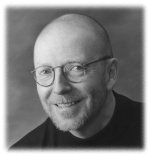I recently participated in the Association of Personal Historians annual conference in Victoria, BC. One of my presentations was Life Stories as Healing: Working in an End-of-Life Environment. In the workshop we looked at some of the skills needed and challenges faced in providing life stories for patients receiving palliative care.
Near the end of our session I asked participants to write down one “burning question” they wanted answered. We had time for only a few. I decided that for those who didn’t have their questions answered I would deal with them here. I thought that those of you who weren’t at my workshop might also appreciate seeing the questions and answers. Next week I’ll tackle further questions in Part Two.
How does one set up a personal history program with a hospice?
There is no one right way to set up a program. Much will depend on the local circumstances. From my experience with Victoria Hospice I’ve learned a few lessons and passed these along in two articles How to Establish a “Life Stories” Hospice Program. Part One and Part Two. For those of you interested in the possibility of a life stories program at your Hospice, these articles would be a good place to start.
Why not charge for life stories work at a hospice? Why should this work be voluntary?
If you’re a professional personal historian, you can request a fee from your Hospice for your services or provide it pro bono. That decision is really up to you and your Hospice.
As a rule, I don’t volunteer my professional services. What I do at Victoria Hospice is volunteer on a regular shift just like the other volunteers. I’ve been doing that for five years.
With regards to the Life Stories program I established, I trained 12 Hospice volunteers, nine of whom are actively engaged in the work. I designed and ran the training programs and for that I was paid my regular fee. I don’t do life story interviews with patients unless there is no one else available.
I still continue to do the co-ordination of the program on a voluntary basis but I’m working to hand this over eventually to another volunteer. My goal is to have the Life Stories program be totally self sufficient without my involvement. From the beginning I made it clear to the Victoria Hospice administration that I wanted to see such a service succeed but that I did not want to continue to be involved in its day-to-day operation.
Are your hospice “Life Stories” volunteers paid and do the families pay for the service?
Our Life Stories volunteers, save one, are not professional personal historians and are not paid. They do this work as part of their contribution to Victoria Hospice. We do not charge families for this service.
I should add that from the beginning we decided to keep the service as simple and as cost effective as possible. We only provide unedited audio interviews transferred to CDs. We also provide a list of resource people in the community that families can hire should they wish to do more with their interviews.
How long is a typical “Life Stories” interview session?
To be honest there isn’t really a typical session. So much depends on the condition of the patient. We don’t schedule more than an hour but sessions can be as short as 10 or 15 minutes if the patient is weak or drowsy.
What is the typical time it takes for your volunteers to complete a personal history project?
Again, there is no typical length of time. We tell patients that they can use up to 5 hours of interview time to tell their story. Some manage that and others become too ill to continue beyond an hour or two. So much depends on the overall health of a patient when they start the process.
Given the fact that our patients are frail, it can sometimes take 6 or more weeks to complete 5 hours of interview.
What if the patient is resistant to talking at all?
Our Life Stories program is only offered to those Victoria Hospice patients who request it. At any time a patient may opt out of the Life Stories program if they find it not to their liking.
Next week watch for Part Two.
If you enjoyed this post, get free updates by email.
Photo by Kelly Sue DeConnick







Thankis, Dan, for responding to some of the burning questions we had by the end of your workshop.
@Annie Payne. Thanks, Annie. Watch for Part Two next week. It was great to finally meet you at the conference.